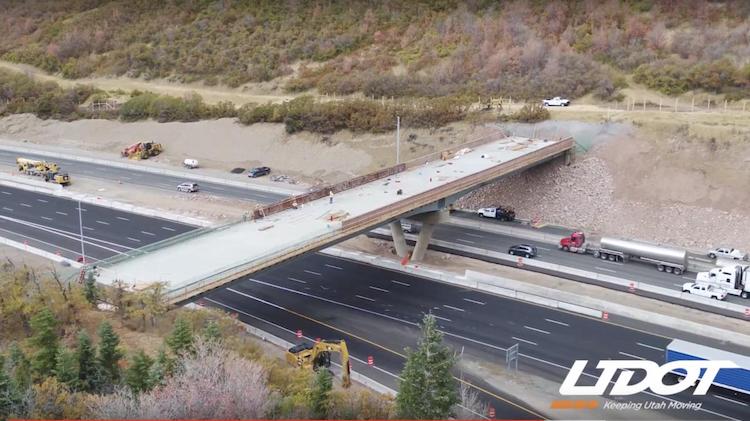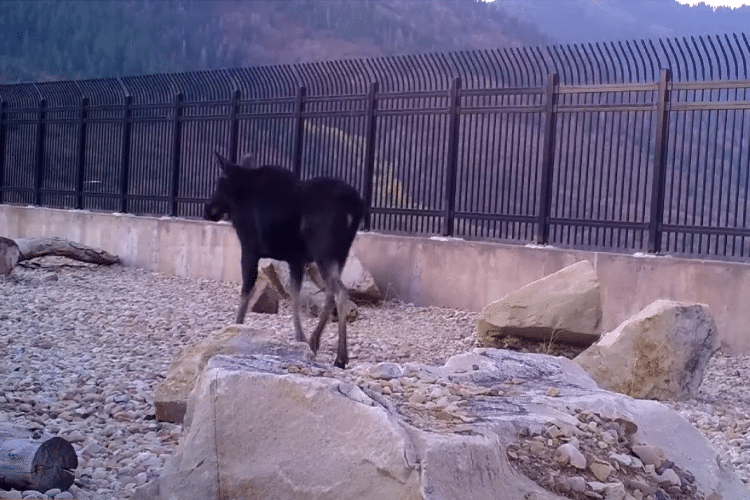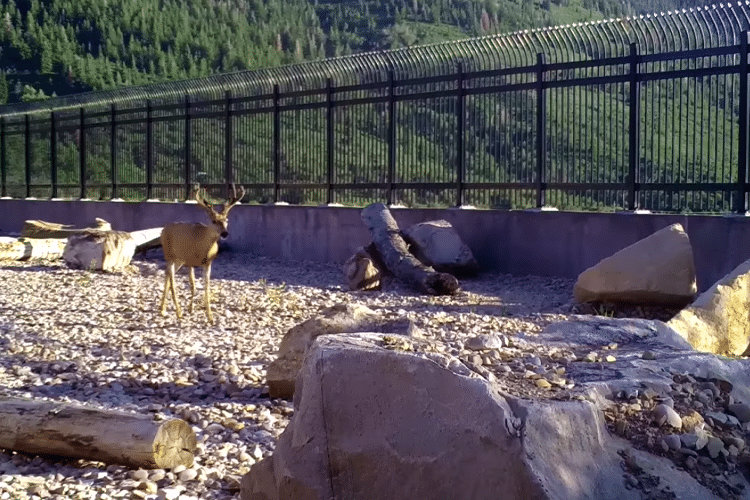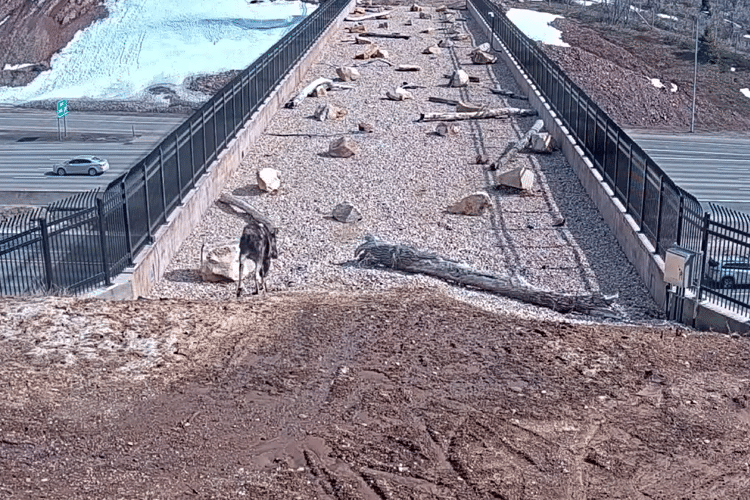
Photo: Screenshot from Utah Division of WIldlife Services Video
Utah’s I-80 was one of the deadliest roads for animals in the state. The worst area—nicknamed Slaughter Row—spanned 13 miles of highway and claimed the lives of 122 deer, 13 moose, four elk, and three mountain lions over the course of just two years. Luckily, the state’s largest wildlife overpass was constructed in this area in 2018 and has already shown signs of success. Wildlife experts had suggested that it would take years for animals to begin using the structure, but new footage released by the Utah Division of Wildlife proves that they are using the overpass even earlier than expected.
So how do the animals know to cross the bridge? Three and a half miles of fencing runs along both sides of the highway, guiding the animals to the bridge and preventing them from crossing in unwanted areas. The fencing was part of Utah’s earlier attempts to prevent animal death and predates the overpass. In 2015, the nonprofit Save People, Save Wildlife was created to find traffic safety solutions. The group, in combined efforts with the UDOT, managed to raise $100,000 for fencing. But when it became clear that animals would simply walk along the fence until they found an opening to cross, the group pushed for a safe way for the animals to do so.

Photo: Screenshot from Utah Division of Wildlife Services Video
Designing the wildlife bridge and the fencing was not a simple task. UDOT worked with the Utah Division of Wildlife Resources to understand migratory patterns of local wildlife. Planning around these natural paths helped ensure that animals would want to cross in the chosen location and that they would eventually grow to trust the passageway.
Research was also necessary to understand what the bridge should look like. Should it be free of all obstacles to ensure the easiest crossing? Should it be covered in grasses to blend into the surrounding forest? It was decided that a natural landscape was more likely to attract wildlife. The facebook video released by the Utah Division of Wildlife—and the animals caught in the screenshots below—suggests that designers made the right decision. Bears, deer, elk, and other animals all seem at home exploring the logs and boulders that dot the overpass.
The new footage proves that the bridge is already preventing accidents and saving both animal and human lives. In a few more years, the state will conduct a full study of the changes to quantify the improvement and understand exactly how many lives have been saved by its construction.
New footage of Utah’s largest wildlife overpass proves that animals are using the structure, allowing them to avoid oncoming traffic. Ultimately, this saves both animal and human lives.
The worst of Utah’s I-80—nicknamed Slaughter Row—spanned 13 miles of highway and claimed the lives of 122 deer, 13 moose, four elk, and three mountain lions over the course of just two years.

Photo: Screenshot from Utah Division of Wildlife Services Video
Before constructing the wildlife overpass, UDOT worked with the Utah Division of Wildlife Resources to understand the migratory patterns of local wildlife.

Photo: Screenshot from Utah Division of Wildlife Services Video
In a few more years, the state will conduct a full study of the changes to quantify the improvement and understand exactly how many lives have been saved by its construction.

Photo: Screenshot from Utah Division of Wildlife Services Video
Utah Division of Wildlife Services: Website | Facebook | Instagram
h/t: [Smithsonian Magazine]
Related Articles:
These Remote Islands Will Be One of the Largest Wildlife Sanctuaries in the World
You Can Sleep Under the Northern Lights in This Outdoor Bubble-Shaped Hotel
Strange Monolith Discovered in Remote Part of Utah Desert Mysteriously Disappears
This Island off the Amalfi Coast in Italy Is Shaped Like a Dolphin
